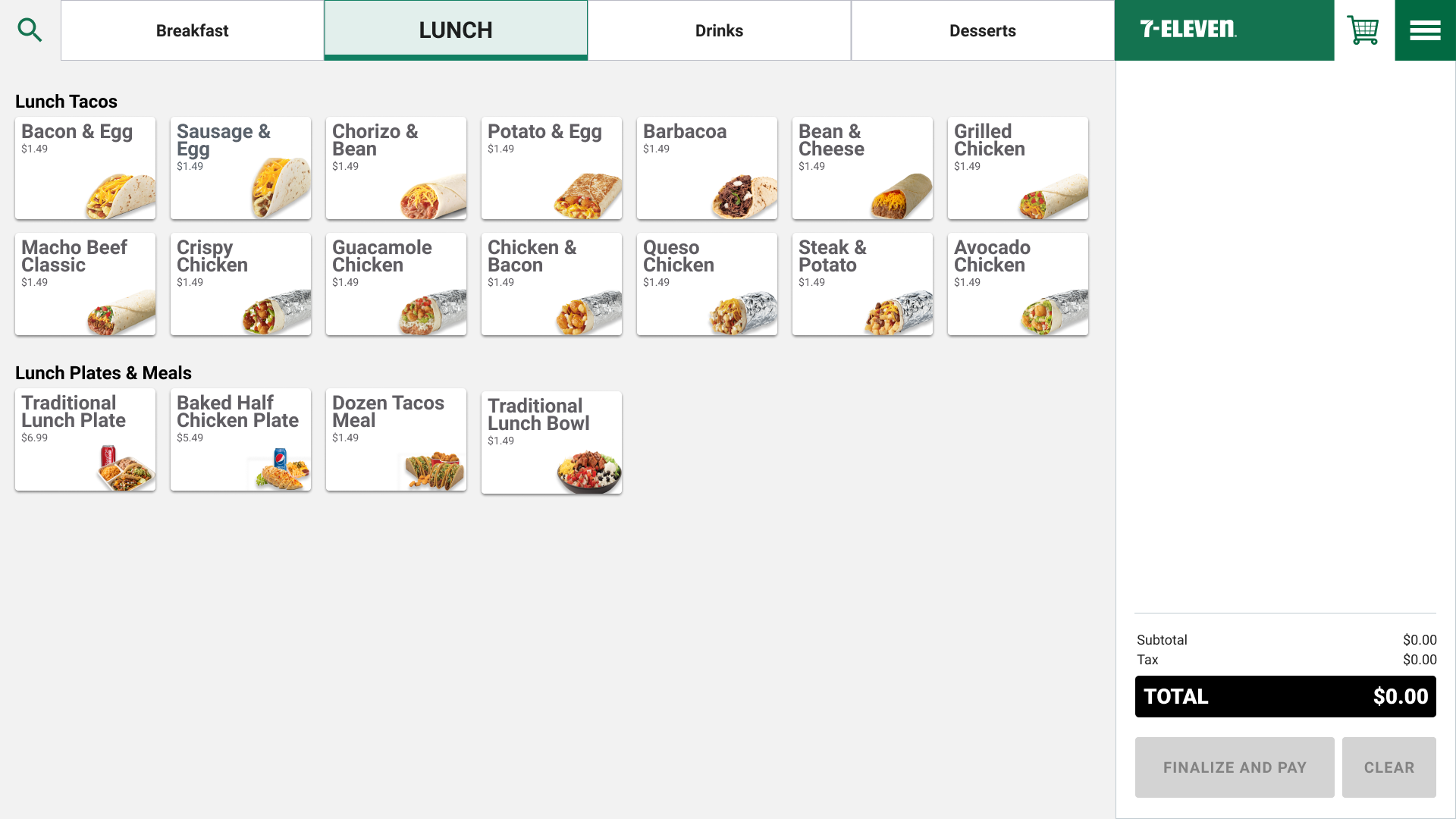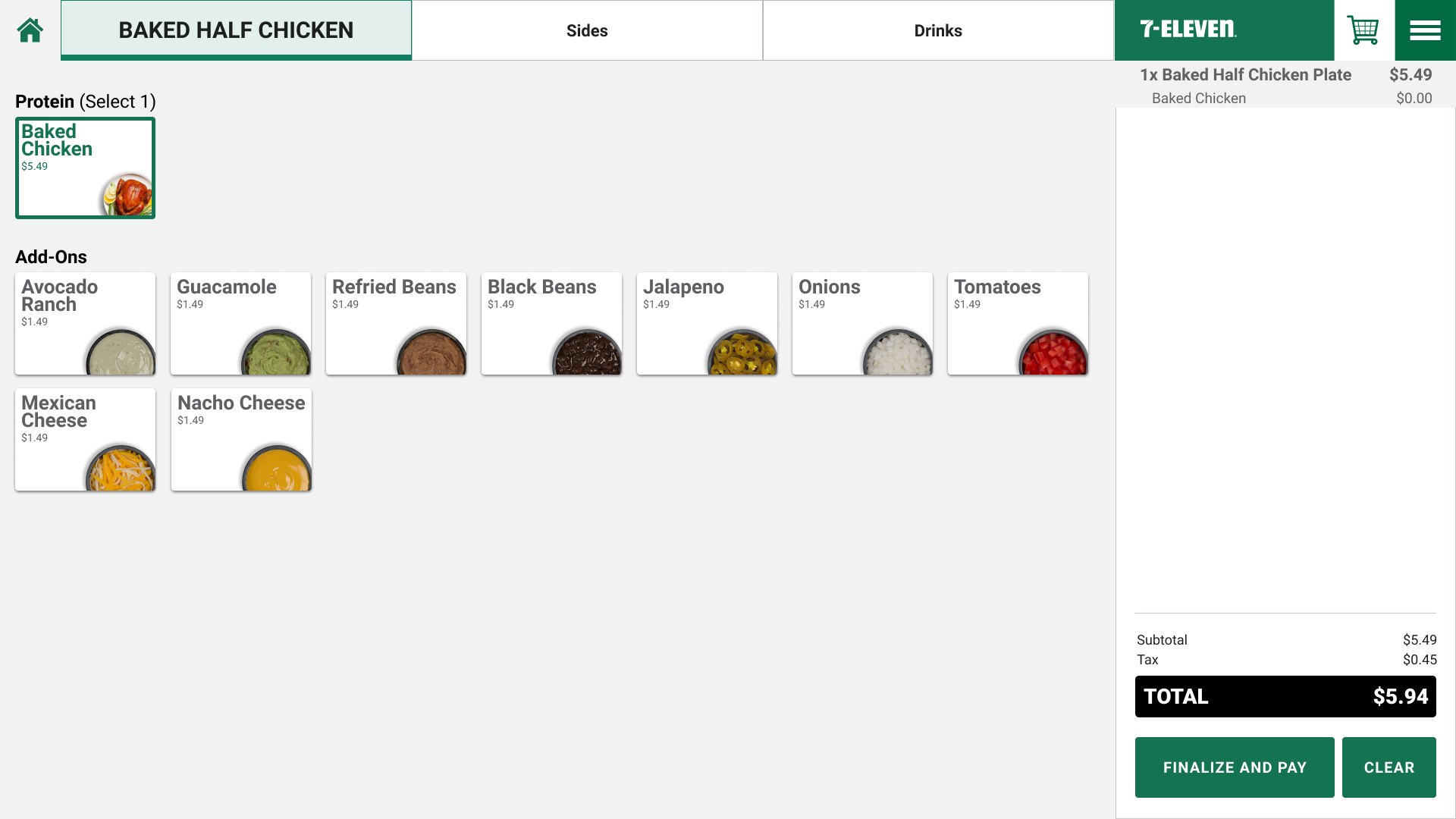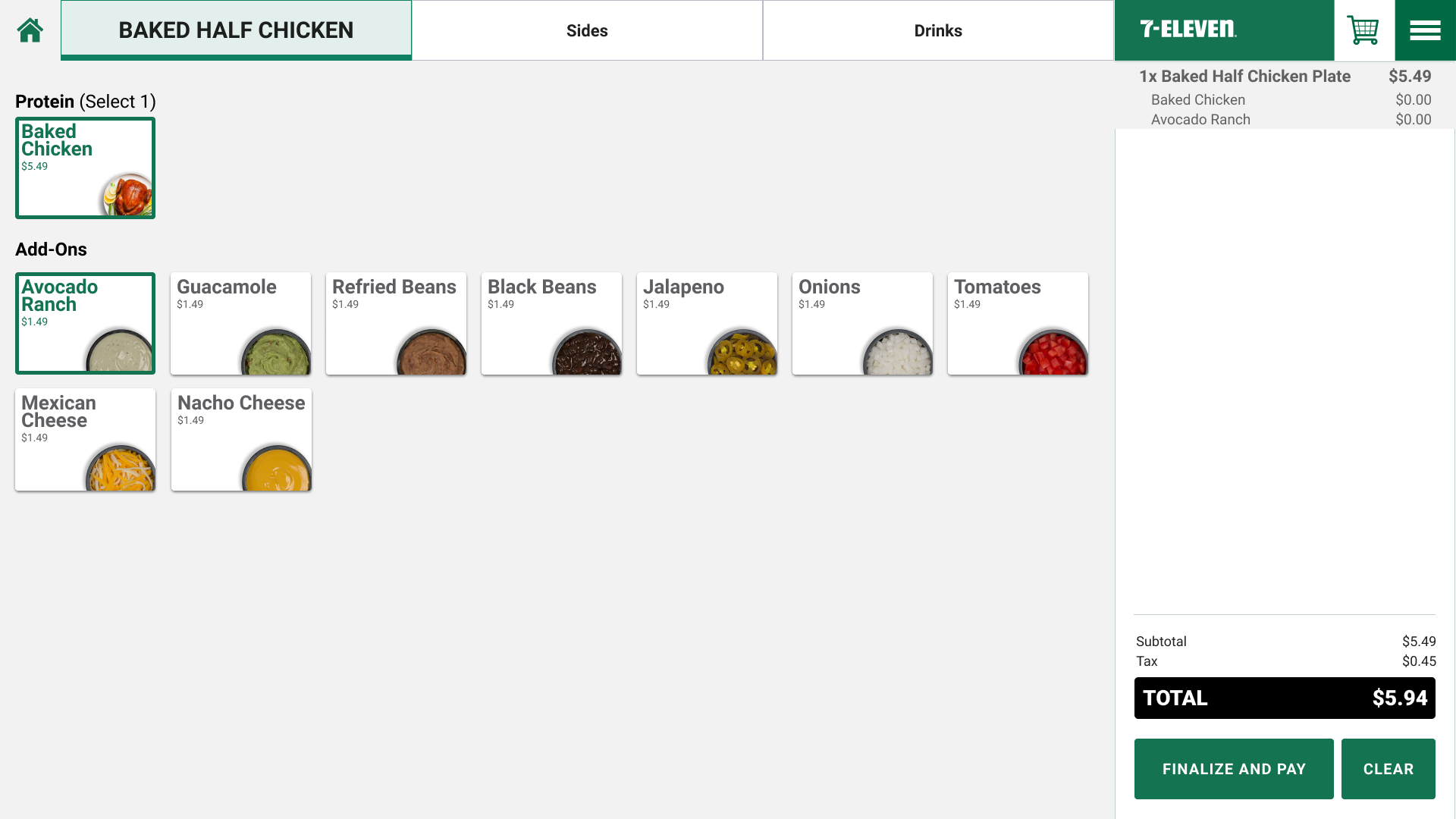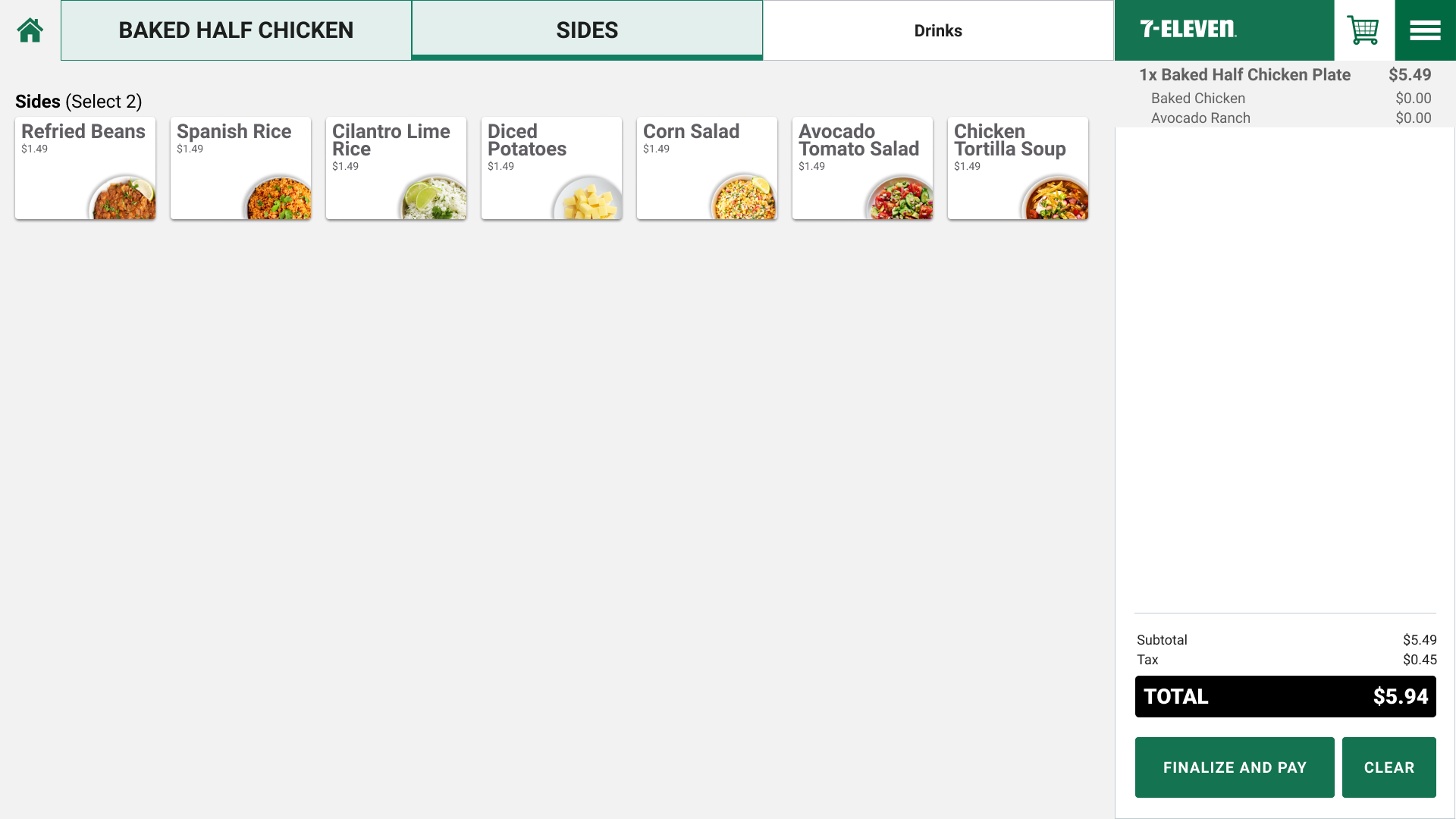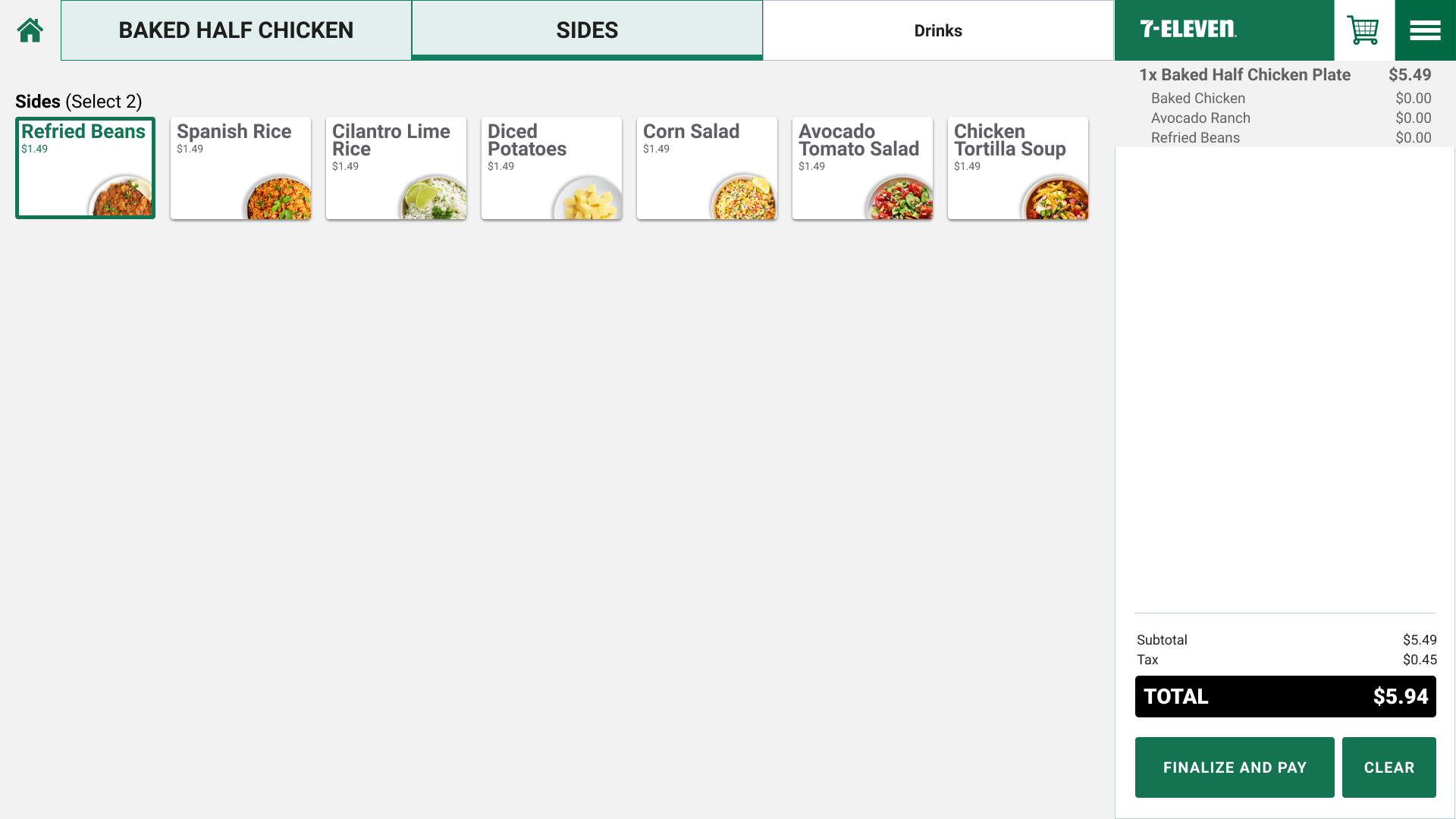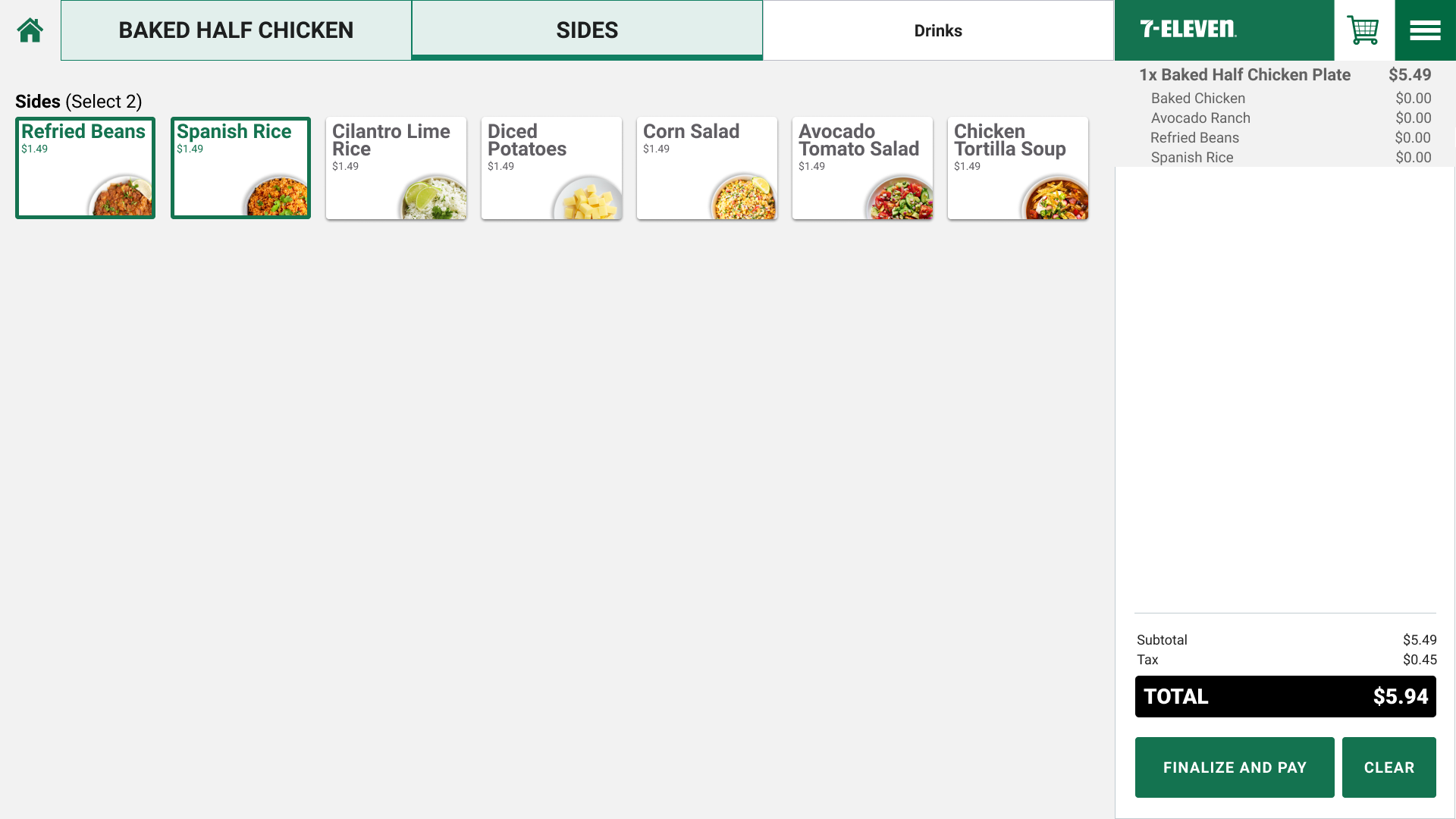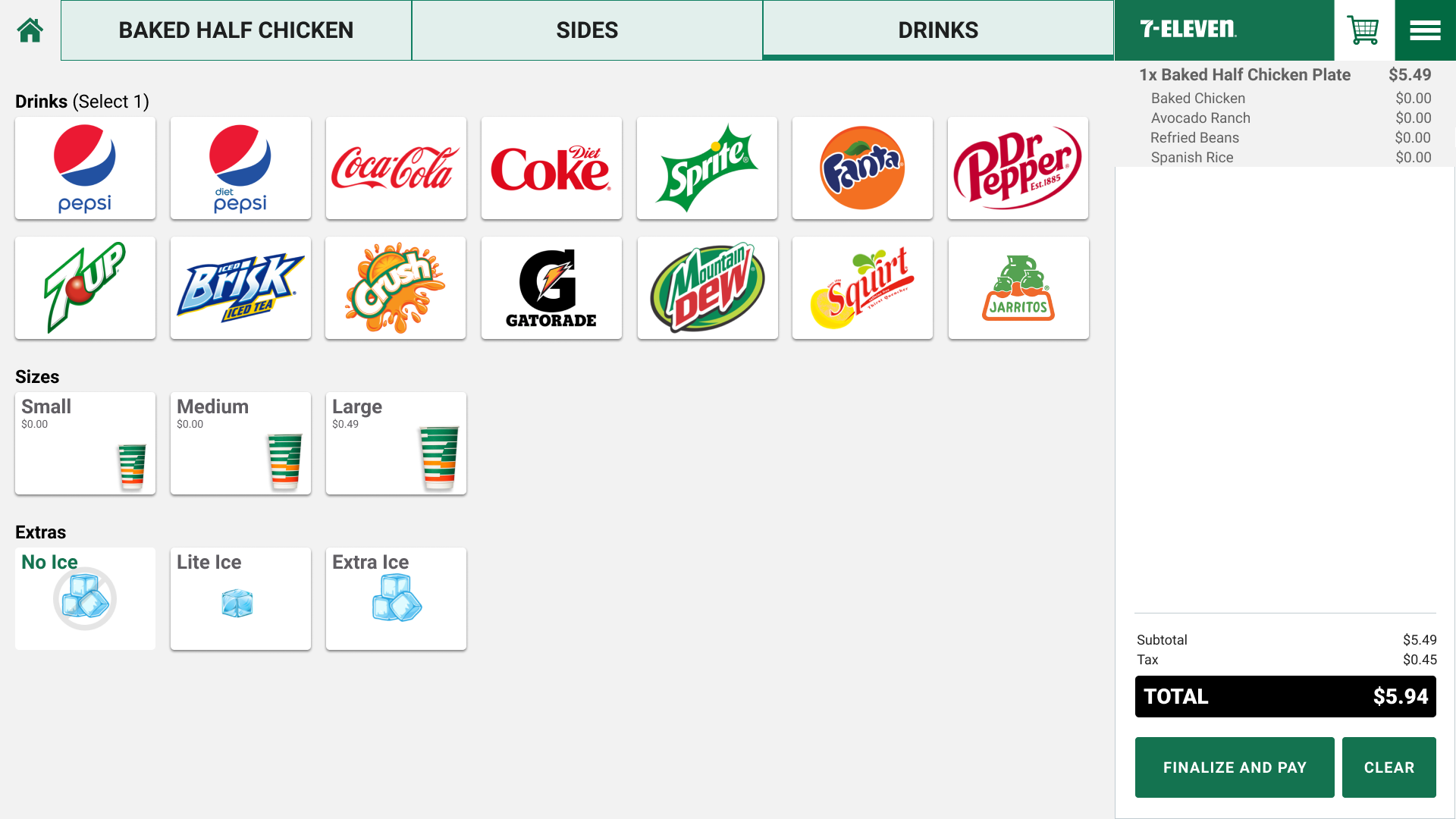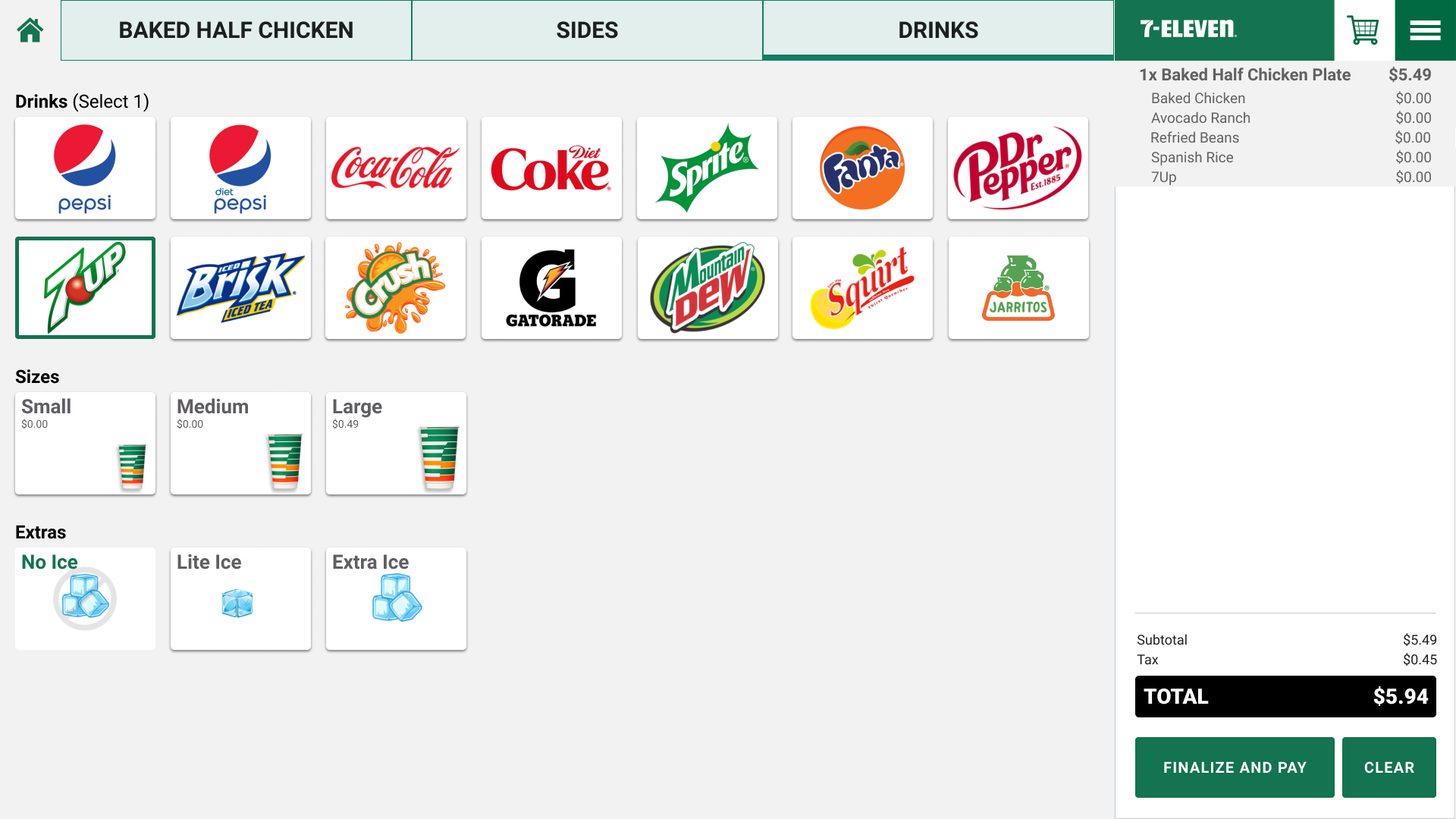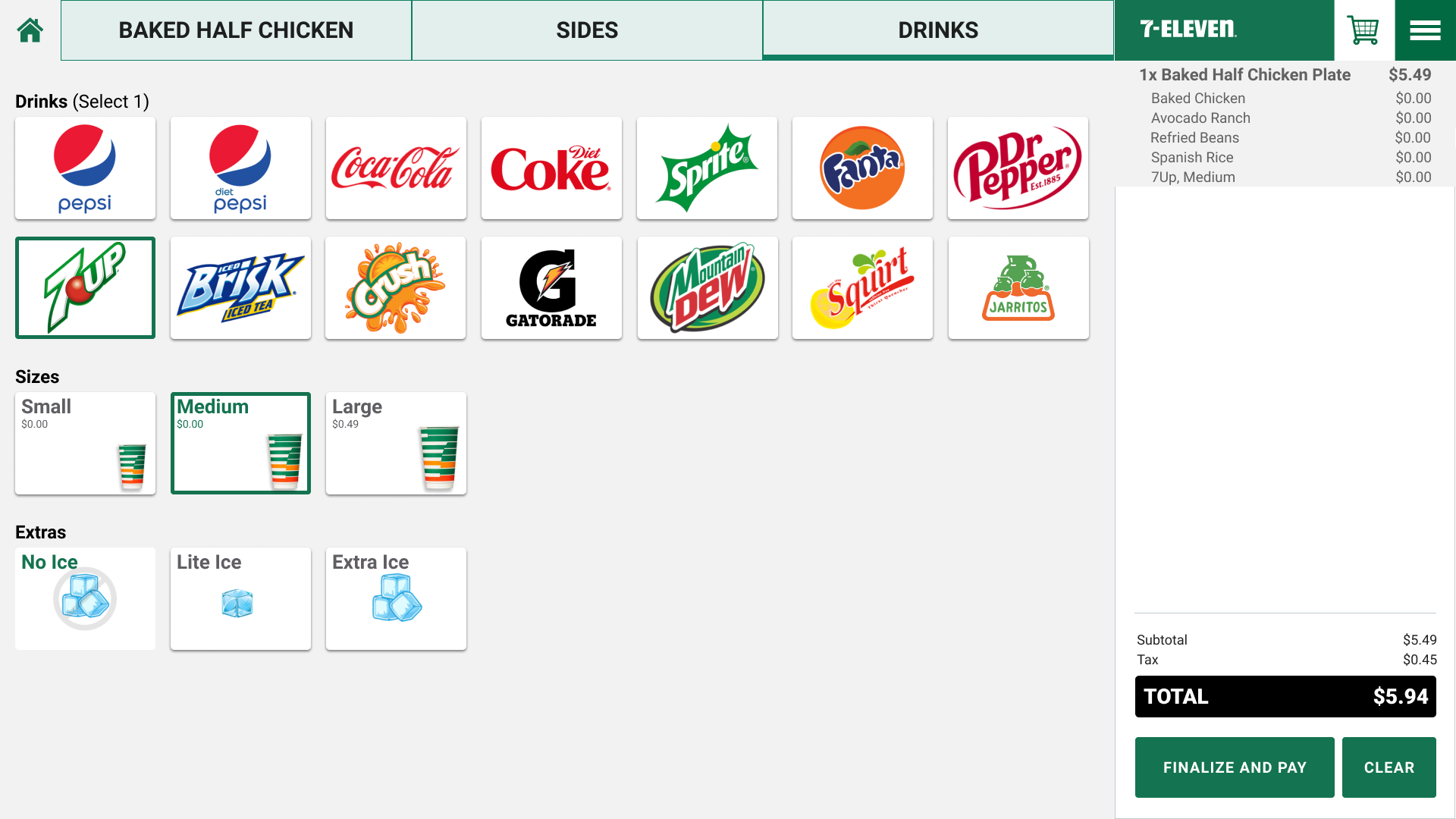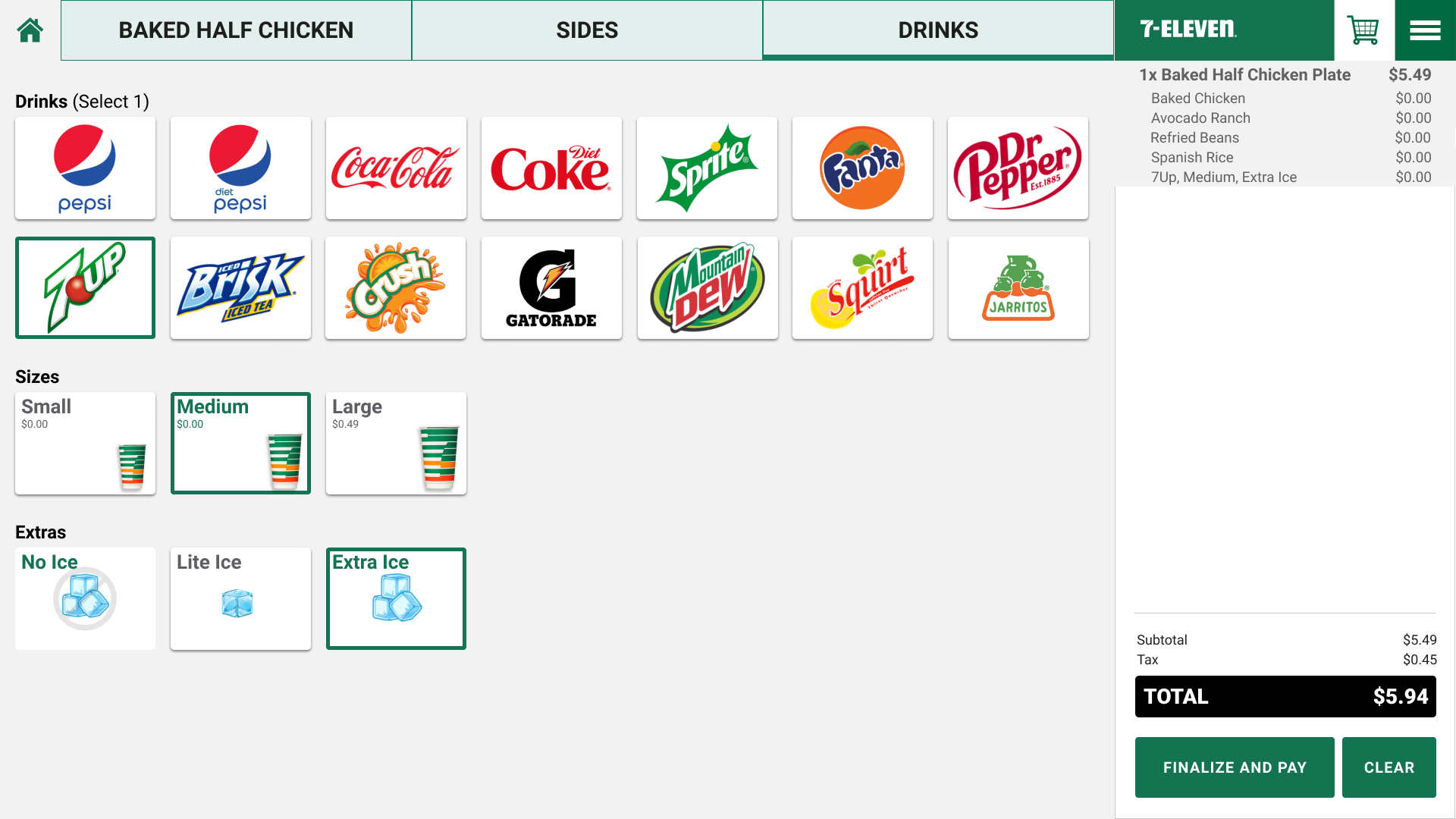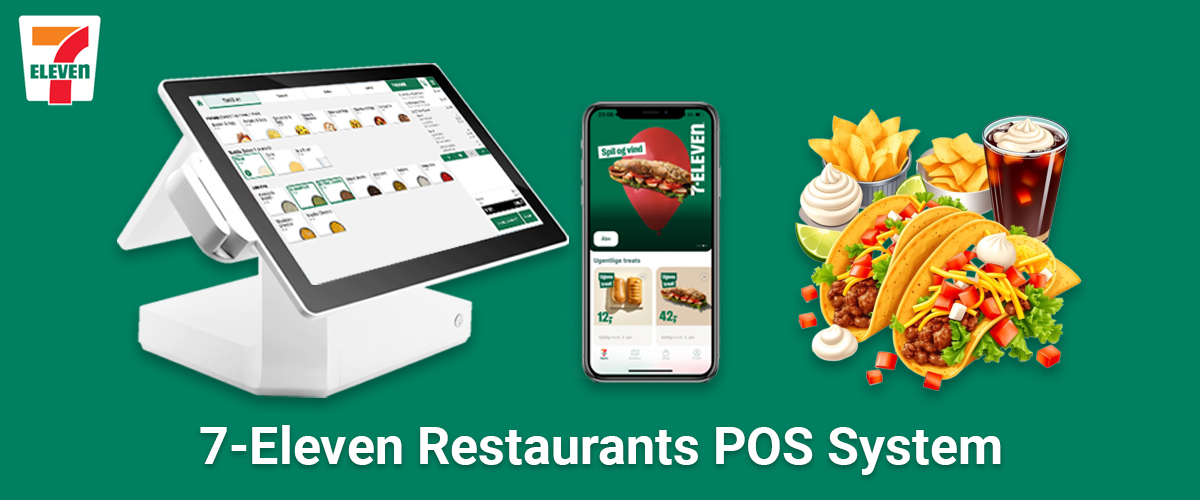
UX Workflow: Designing 7-Eleven Restaurant POS System
Project Overview
UX Story
Designing a Smart POS System for 7-Eleven Quick-Serve Restaurants
7-Eleven restaurant POS (Point-of-Sale) system — tailored to both store employees and real customers, while ensuring operational efficiency and user delight.
 Phase 1: Gathering Requirements
Phase 1: Gathering Requirements
Business Stakeholder Interviews
I began by meeting with 7-Eleven regional operations managers and store franchisees. Their top priorities:
Speed: Serve more customers during rush hours.
Flexibility: Handle multiple meal configurations (breakfast, lunch, snacks).
Upselling: Increase attachment rates for sides and drinks.
Accuracy: Minimize order errors at the cashier side.
They also requested real-time data tracking for popular items and the ability to tweak combos without IT intervention.
In-Store Observations
I visited two 7-Eleven stores with QSR counters. What we noticed:
Cashiers were multitasking — taking orders, prepping food, answering questions.
Customers were confused by menu boards that changed throughout the day.
Meal combos weren’t being promoted effectively, even though they existed.
I observed bottlenecks around customization requests, unclear pricing, and limited visual cues for customers.
 Phase 2: Brainstorming with Stakeholders
Phase 2: Brainstorming with Stakeholders
Conducted a design sprint with the product, ops, and dev teams. We explored:
Time-based menu logic (breakfast/lunch menus switch automatically)
A modular meal builder that adapts to items in stock
A guided POS interface with built-in upselling logic
We agreed the POS shouldn’t just record orders — it should guide staff, reduce training time, and drive more value per transaction.
 Phase 3: Journey Mapping
Phase 3: Journey Mapping
Mapped the journey from store opening to order fulfillment:
Cashier Login: Staff enters the POS, selects service type (pickup, dine-in).
Menu Selection: Customer browses digital menu (driven by time of day).
Order Entry: Cashier builds custom meals quickly with modular prompts.
Upsell Prompt: POS suggests sides/drinks based on current order.
Payment: Fast cash or card checkout.
Order Handoff: Receipt with clear item breakdown and ETA.
Pain points:
Frequent errors during meal customizations.
Low visibility into add-ons.
New employees take too long to learn the POS.
Navigating too many screens
Small buttons
Unclear combo logic
Customer Flow (Self-Service Kiosk – future scope)
Tap “Start Order”
Build item → Choose combo
Customize food
Pay via QR or card
 Phase 4: Personas
Phase 4: Personas
From interviews with 7-Eleven employees and customers, we built 3 personas:
Sarah – Franchise Cashier
Part-time, rotates shifts. Needs clear prompts and minimal training.Imran – Store Manager
Oversees operations. Wants analytics, control over menu timing, and real-time issue alerts.Jay – Hungry Commuter
Wants a hot breakfast taco and coffee — fast. Doesn’t want to make decisions, just grab and go.
 Phase 5: User Interviews & Validation
Phase 5: User Interviews & Validation
From interviews with 7-Eleven employees and customers, we built 3 personas:
Sarah – Franchise Cashier
Part-time, rotates shifts. Needs clear prompts and minimal training.Imran – Store Manager
Oversees operations. Wants analytics, control over menu timing, and real-time issue alerts.Jay – Hungry Commuter
Wants a hot breakfast taco and coffee — fast. Doesn’t want to make decisions, just grab and go.
 Phase 6: Wireframes
Phase 6: Wireframes
Designed modular wireframes using Figma:
Main Menu: Large category tiles (Hot Food, Drinks, Snacks, etc.)
Modifier Panel: Slide-up panel for quick edits (cheese, sauces, tortilla)
Smart Combos: Auto-detects eligible combos and suggests upgrades
Cart View: Real-time subtotal and calorie count (optional)
 Phase 7: Interactive Prototype
Phase 7: Interactive Prototype
Developed a high-fidelity clickable prototype in Axure RP
Main Menu: Large category tiles (Hot Food, Drinks, Snacks, etc.)
Modifier Panel: Slide-up panel for quick edits (cheese, sauces, tortilla)
Smart Combos: Auto-detects eligible combos and suggests upgrades
Cart View: Real-time subtotal and calorie count (optional)
Tappable meal builder interface
Animated upsell cards (e.g., “Add a bottled drink for $1?”)
Real-time price updating
Split-screen showing order summary alongside item options
Built it for tablet-sized POS terminals used in-store & mobile version(Android & iOS) for real customers
 Phase 8: Usability Testing
Phase 8: Usability Testing
We conducted usability testing in 2 live stores:
5 cashiers used the prototype while shadowed
2 managers reviewing back-office admin panels
Findings:
Modifier overlays saved 3+ seconds per order
Smart Combo suggestion was intuitive and loved
1 tap too many in the checkout flow — we merged confirmation + pay
We improved:
Faster skip button on upsells
Dynamic visual hierarchy for prices and allergens
 Phase 9: Iteration & Refinement
Phase 9: Iteration & Refinement
After refinement, we finalized:
A POS system that reduces training time, with a guided flow
A UI that adapts to stock, time of day, and user role
Support for combo management, item popularity tracking, and automated upselling
We documented a training guide, support video, and daily reset checklist to support rollout.
 Final Outcome: Faster Orders, Smarter Combos, Happier Staff
Final Outcome: Faster Orders, Smarter Combos, Happier Staff
The new POS system transformed the 7-Eleven QSR experience:
Reduced average order time by 30%
Increased combo uptake by 18%
Improved cashier satisfaction thanks to intuitive UI and built-in prompts
It wasn’t just a new system — it was a full-service UX upgrade.
